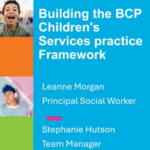Northern Ireland’s integrated services offer the government a
model for England’s health and social care but, as Terry Philpot
asks, is integration actually delivering?
The government’s zeal for modernisation has caused it for once
to cast its eyes not across the Atlantic but to the other side of
the Irish Sea. There Northern Ireland’s much-trumpeted integrated
health and social services are seen as a solution to the perennial
problems of health and social services’ failure to work
together.
Last July’s NHS Plan mapped a future which leaned markedly
toward the province’s arrangements. Initially this was greeted with
relief by the Association of Directors of Social Services who,
curiously, saw no reorganisation implications. Now, mature
reflection and the Health and Social Care Bill giving flesh to the
idea of care trusts under NHS control – by carrot or stick – the
reality is starker and less agreeable. The association, some of
whose members have in the past at least thought Northern Ireland
worth more than a second glance, now wants more pluralist
arrangements.
Only those who take textbook descriptions for organisational
blueprints can overlook the complicated nature and – now – the
uncertain future of the Northern Ireland system. It is a system not
only sometimes questioned from within but, in the light of the
coming of the Northern Ireland Assembly, its future is being
debated. Only last December Bairbre de Bruin, the health secretary,
was talking about the strong possibility of an all-Ireland health
service. Could integrated services remain intact in the face of
that? There is also the review of local administration. Should
democratic local government return to the province after nearly 30
years (the present 29 local councils do not have major
responsibilities)? And what would, then, be the chances of the
boards and trusts being subsumed wholesale by new structures, when
local government control in the rest of the NHS has never got
beyond the starting post? One possibility would be to drop primary
health care and social care into a new (democratic) system while
acute hospitals were hived off into another quango of which
Northern Ireland has now become so accustomed as a form of
governance.
In 1974 the suspension of the Stormont parliament and with it
the end of elected, if deeply flawed local government, left an
organisational gap into which were inserted centrally accountable
joint health and social services boards.
Set against the dual administrations of the rest of the UK, the
boards might have looked innovative and even desirable, but
internal structures included professional silos of directors of
medicine, nursing, administration and social services and others.
What the system suffered from was “too little collective vision and
not enough shared culture”, says Hugh Connor, director of social
services, South and East Belfast Community Trust and a member of
England and Wales community care task force in 1994. However, in
1980, the Department of Health and Social Security transplanted
into the province Sir Roy Griffiths’ plans for general management
in the separately run NHS elsewhere in England and Wales. Despite
initial protests from some, the professional silos remained but
were concerned with regional strategic planning, quality monitoring
and professional standards; the directors lost operational and line
management and executive responsibilities. Unit management followed
soon afterward with the creation of acute hospital and community
trusts shifting responsibility for services and commissioning
considerably downward to create more variety and local
responsiveness. The community trusts have social care, district
nursing and health visiting under their belts.
Significantly, what dramatically affected the management and
delivery of social care stemmed from health reforms, just as the
potentially enormous changes for English social services have grown
from a national plan for the NHS. Roy Blair, director of social
services, Southern Health and Social Services Board, points out
that all reorganisations have been occasioned by health service
needs. His predecessor, Terry Bamford, later executive director
(social services and housing), Royal Borough of Kensington and
Chelsea, in a paper for the ADSS last year, wrote: “There has been
no recognition that the delivery of social care may require a
different model. The needs of health care have dominated
decision-making.”1 But almost everyone agrees that the
structure has gone a long way to break down the traditional
straitjackets of professional approaches. Multi-disciplinary
working has become the norm. One offshoot of this is that
inter-professional training has moved far more quickly in the
trusts than in England and Wales. Unsurprisingly, training for the
medical profession has kept its traditional distance.
Andrew Dougal, chief executive of the Northern Ireland Heart,
Chest and Stroke Association, says that “in recent years there’s
been a lot more synergy and harnessing of different professional
skills”. He also thinks that close inter-professional working
allows doctors to see the validity of social work models of caring
for people. “They tend,” he adds “to welcome the possibility of
learning.” Hugh Connor believes that integrated structures, solving
problems, assist health and social services, “march to the same
drumbeat”.
However, Mary Wilmont, director of social services, Northern
Board, believes that social work has had a secondary place: much of
her energy is taken up in defending its corner. She instances one
of the most dramatic signs of social services’ status when two
years ago the Eastern Board’s social care budget was raided to make
up for an overspend by the acute sector.
It is also Mary Wilmont’s opinion that integrated structures are
confused with inter-disciplinary working. “If you are competing
with other services for scarce resources it is more difficult to
co-operate with them.”
A major example of the budgetary primacy of health and acute
care is perhaps the fact that there are still too many acute
hospitals and beds for the province’s needs. Again, a higher
proportion of adults in Northern Ireland are in institutional care.
Long-stay hospitals still have their place. In 1999, 62 per cent of
all packages of care for older people were in residential and
nursing care, 10 per cent higher than 1995. The percentage of
mentally ill people being supported at home has fallen in five
years.2
Even Hugh Connor, an unabashed enthusiast for the present
arrangements, who was also critical of the Eastern Board
experience, says: “Northern Ireland is no different from England in
the sense that the first thing people think of is ‘Save our
hospital’. GPs are just as powerful here as elsewhere. Being a
community trust has, however, allowed us to keep an eye on that
kind of provision. We have tried to create a common purpose and
vision and a great deal of that is about social work values. People
want cohesive services and in this trust we have led general
practice, it hasn’t led us. We have nurtured it because our GPs
didn’t work together and we have helped them to do so.” Individual
trust directors of social services carry other responsibilities –
some as heads of management performance, operations or planning,
one as general manager of children’s services, another as deputy
chief executive of a trust. This, says Hugh Connor, gives them a
wider vision.
Dominic Burke, director of social services, Western Health and
Social Services Board, suggests that one benefit for social
services is that because they are tagged to health
organisationally, their spending has kept pace with it. His
Southern Board colleague Roy Blair demurs. He believes that is open
to question.
Northern Ireland’s experience has been heralded as a possible
promised land over the years. But only now, with the Health and
Social Care Bill provoking serious thought about a world without
social services departments, are we learning how little, in fact,
we know about the province.
The 1.6 million people of Northern Ireland are top heavy with
boards, trusts, directorates and the paraphernalia of the quango –
four boards, 19 trusts and one central department run health and
social services. Until very recently, its public services have been
governed day to day by civil servants. Lobbying has relied largely
on its thriving voluntary sector. Politicians have for decades had
their eyes on bigger issues than the delivery of home care or bed
blocking. It still has no equivalent of Quality Protects,
modernisation or joint reviews. Spending on children is £70
per head per child behind England. There are proportionally more
children in care in Ireland than in England and Wales.
Curious, too, that the government has borrowed from a model one
of whose most significant factors is “the democratic deficit”.
Health and social services are two very different entities and
Northern Ireland suggests that it takes more than placing them
under the same roof to weld them together for effective
delivery.
And while the Department of Health is obsessed with health and
social care working together, some councils have joined social
services and housing, others have brought in education. No one is
mentioning that in Northern Ireland housing and education – other
key partners of social care – are separate and even have different
boundaries. But Northern Ireland’s system does take in all services
– adult and children. In the UK the future of children’s and family
services is not even addressed as a consequence, so driven by adult
services are the reforms. On paper, which is all Westminster
ministers and most people know about Northern Ireland, things look
hunky-dory. But are not the consequences of change for vulnerable
young and old alike worth a more concentrated examination than
this, the politicians’ latest panacea?
1 T Bamford, Integrated Health and Social Care in
Northern Ireland – Myth and Reality, paper for ADSS seminar,
August, 2000
2 T Bamford, ibid



 Bournemouth, Christchurch and Poole
Bournemouth, Christchurch and Poole  Hampshire County Council
Hampshire County Council  Oxfordshire County Council
Oxfordshire County Council  South Gloucestershire Council
South Gloucestershire Council  Wokingham Borough Council
Wokingham Borough Council  Webinar: building a practice framework with the influence of practitioner voice
Webinar: building a practice framework with the influence of practitioner voice  ‘They don’t have to retell their story’: building long-lasting relationships with children and young people
‘They don’t have to retell their story’: building long-lasting relationships with children and young people  Podcast: returning to social work after becoming a first-time parent
Podcast: returning to social work after becoming a first-time parent  How managers are inspiring social workers to progress in their careers
How managers are inspiring social workers to progress in their careers  Workforce Insights – showcasing a selection of the sector’s top recruiters
Workforce Insights – showcasing a selection of the sector’s top recruiters 

 Facebook
Facebook X
X LinkedIn
LinkedIn Instagram
Instagram
Comments are closed.